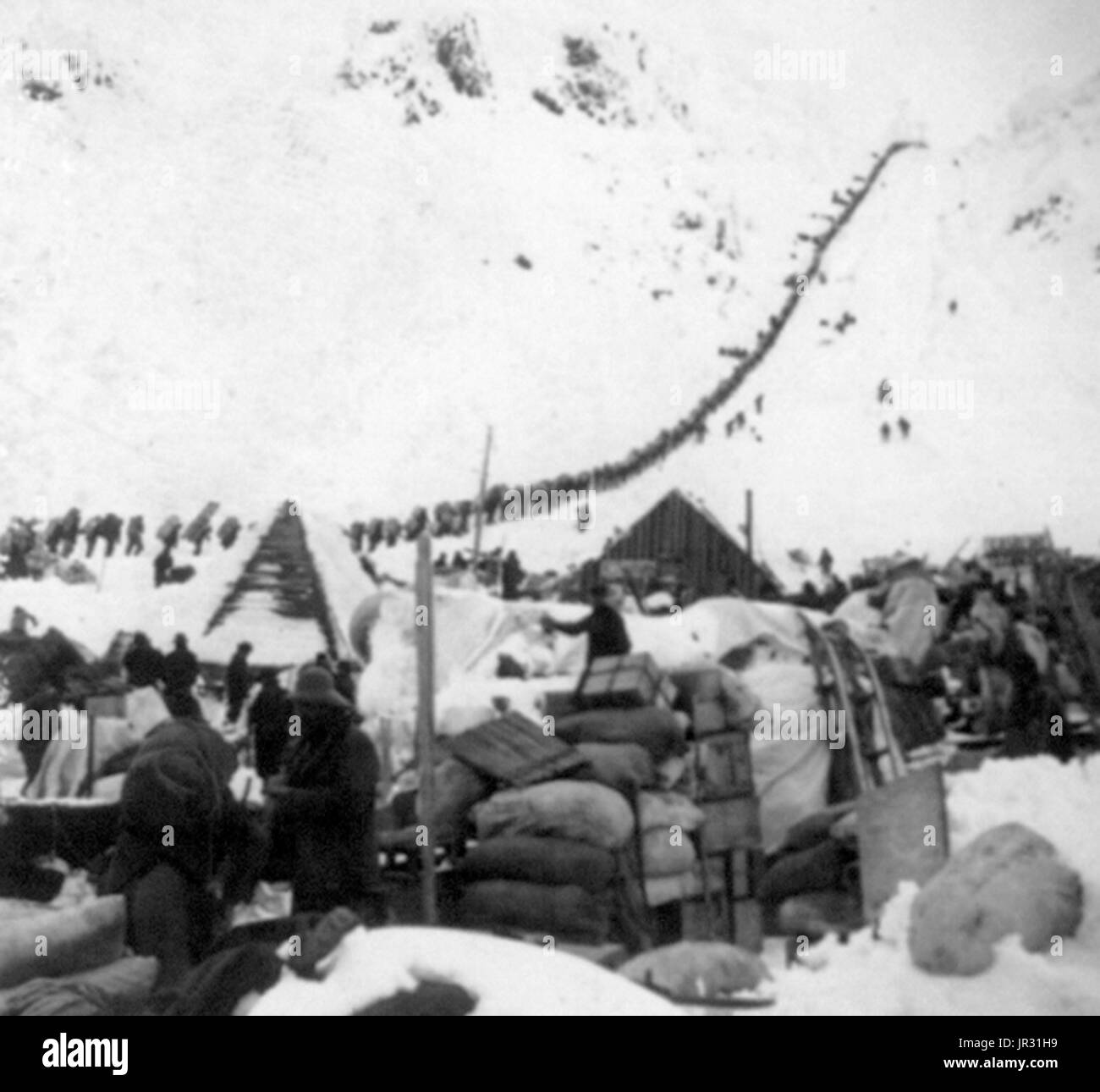Bound for the Klondike Gold Fields, Chilcoot Pass, Alaska. The Klondike Gold Rush was a migration by an estimated 100,000 prospectors to the Klondike region of the Yukon between 1896-99. Gold was discovered by local miners on August 16, 1896 and, when news reached Seattle and San Francisco, it triggered a stampede of would-be prospectors. To reach the gold fields most took the route through the ports of Dyea and Skagway in Alaska. Here, the Klondikers could follow either the Chilkoot or the White Pass trails to the Yukon River and sail down to the Klondike. Each of them was required to bring a

Image details
Contributor:
Science History Images / Alamy Stock PhotoImage ID:
JR31H9File size:
40.2 MB (613.2 KB Compressed download)Releases:
Model - no | Property - noDo I need a release?Dimensions:
3900 x 3600 px | 33 x 30.5 cm | 13 x 12 inches | 300dpiPhotographer:
Photo ResearchersMore information:
This image could have imperfections as it’s either historical or reportage.
Bound for the Klondike Gold Fields, Chilcoot Pass, Alaska. The Klondike Gold Rush was a migration by an estimated 100, 000 prospectors to the Klondike region of the Yukon between 1896-99. Gold was discovered by local miners on August 16, 1896 and, when news reached Seattle and San Francisco, it triggered a stampede of would-be prospectors. To reach the gold fields most took the route through the ports of Dyea and Skagway in Alaska. Here, the Klondikers could follow either the Chilkoot or the White Pass trails to the Yukon River and sail down to the Klondike. Each of them was required to bring a year's supply of food by the Canadian authorities in order to prevent starvation. In all, their equipment weighed close to a ton, which for most had to be carried in stages by themselves. Together with mountainous terrain and cold climate this meant that those who persisted did not arrive until summer 1898. Mining was challenging as the ore was distributed in an uneven manner and digging was made slow by permafrost. In the summer of 1899, gold was discovered around Nome in west Alaska, and many prospectors left the Klondike for the new goldfields, marking the end of the rush. Gold mining activity lasted until 1903. Cropped stereograph card, Keystone View Company, 1898.